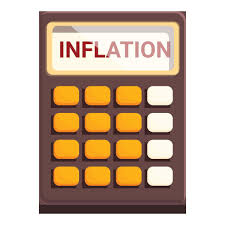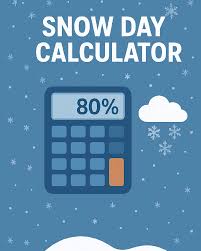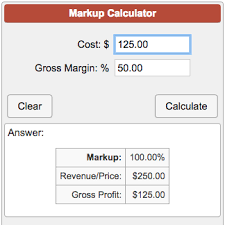Simplify Investing with Our Free Calculators
Take control of your finances with Aurexa Finance’s free calculators. From calculating average share prices to projecting returns, our tools make investing easy and accurate for Indian traders. Try them today to boost your portfolio confidence!
What is the Stock Market?
The stock market is a marketplace where buyers and sellers trade equity securities, primarily stocks, which represent ownership in public companies. It’s a network of exchanges like the New York Stock Exchange (NYSE), Nasdaq, Bombay Stock Exchange (BSE), and National Stock Exchange (NSE) in India, facilitating the buying and selling of shares through electronic platforms.
At its core, the stock market allows companies to raise capital by issuing shares to the public, while investors can purchase these shares to participate in the company’s growth and profits through dividends and capital appreciation. In 2025, the market has evolved with digital trading, algorithmic systems, and increased retail participation via apps like Zerodha or Groww in India.
Why does it matter? The stock market drives economic growth by channeling savings into productive investments. For instance, a company like Reliance Industries can fund expansion by selling shares, benefiting shareholders as the stock price rises. However, prices fluctuate based on supply and demand, influenced by earnings reports, economic data, and global events. In October 2025, markets are cautious amid inflation concerns and tariff risks, yet optimistic about tech and renewable sectors.
For beginners, think of it as an auction house for company ownership. Buying a stock means betting on the company’s future success. With tools like our Stock Profit Calculator, you can estimate gains from price increases. Free calculators The market’s accessibility has democratized investing, but education is key to avoiding pitfalls.
(Image Suggestion: Illustration of stock exchange floor with digital screens. Alt text: “Stock market exchange in action, highlighting trading in 2025.”)
History of the Stock Market
The stock market’s origins trace back to the 17th century with the Dutch East India Company issuing the first shares in 1602, allowing public investment in overseas trade. The London Stock Exchange formed in 1698, followed by the NYSE in 1792, marking the formalization of trading.
In India, the BSE, Asia’s oldest exchange, started in 1875 under a banyan tree in Mumbai, evolving into a digital powerhouse by 1995. The NSE, launched in 1992, introduced electronic trading, revolutionizing accessibility.
Major milestones include the 1929 Great Depression crash, the 1987 Black Monday, the 2008 financial crisis, and the 2020 COVID dip followed by a bull run. In 2025, markets have rebounded, with the S&P 500 up year-to-date, but face stagflation risks.
History teaches resilience; long-term investors have seen average 10-12% annual returns. For Indians, the 1992 Harshad Mehta scam highlighted risks, leading to reforms like SEBI’s establishment.
Understanding history helps anticipate cycles. Use our CAGR Calculator to measure historical returns.
How the Stock Market Works
The stock market operates through primary and secondary markets. In the primary market, companies issue new shares via IPOs to raise capital. Investors buy directly from the company.
The secondary market is where traded stocks change hands between investors, with prices determined by supply and demand. Brokers facilitate trades on exchanges like NSE, using order books to match buyers and sellers.
Key players: Investors (retail/institutional), brokers, regulators (SEBI in India), and market makers for liquidity.
Price discovery happens via auctions; a stock rises Free calculators if buyers outnumber sellers. Factors influencing prices include company earnings, economic indicators (GDP, inflation), news, and sentiment.
In 2025, algorithmic trading dominates, with AI analyzing data for high-frequency trades. For beginners, start with a demat account, research stocks, and place orders (market/limit). Diversify to spread risk.
Our SIP Calculator helps plan regular investments, averaging costs over time.
Key Stock Market Indices in 2026
Indices are benchmarks tracking market performance. In 2026, top global indices show mixed trends.
| Index | Current Value (Oct 15, 2025) | YTD Performance | Description |
|---|---|---|---|
| S&P 500 | 6,689 | +25% (estimated) | Tracks 500 U.S. large-caps; tech-heavy. |
| Dow Jones | ~45,000 (approx) | +18% | Industrial average of 30 U.S. stocks. |
| Nasdaq | ~21,000 | +30% | Tech-focused U.S. index. |
| Sensex (India) | 82,605 | +12% | BSE’s 30 blue-chips; up 0.70% recently. |
| Nifty 50 (India) | 25,300+ | +10% | NSE’s 50 stocks; crossed 25,300 in Oct. |
| Hang Seng (Hong Kong) | ~20,000 | +19.3% YTD | Asia’s leading index; strong rebound. |
| FTSE 100 (UK) | ~8,500 | +8% | UK’s top 100 companies. |
| DAX (Germany) | ~19,500 | +15% | German blue-chips. |
These indices reflect economic health. India’s markets are buoyant despite EM slowdown, with Nifty expected to see earnings growth in Q3 2025. Track them for portfolio benchmarking.
Types of Stocks
Stocks are categorized by size, sector, and style.
- Blue-Chip Stocks: Large, stable companies like Apple or Tata Group; low risk, steady dividends.
- Growth Stocks: High-potential companies like Tesla or Adani Green; focus on capital appreciation.
- Value Stocks: Undervalued firms like banks during dips; buy low, sell high.
- Dividend Stocks: Pay regular dividends, e.g., ITC in India.
- Penny Stocks: Low-priced (<₹10), high-risk, high-reward.
- Cyclical Stocks: Tied to economy, e.g., auto sector.
- Defensive Stocks: Stable in downturns, e.g., FMCG like Hindustan Unilever.
In 2025, tech and renewable Free calculators stocks are trending, with AI firms leading growth. Diversify across types to balance risk.
Investing vs. Trading
Investing is long-term, buying and holding for years, focusing on fundamentals. Trading is short-term, buying/selling for quick profits, using technical analysis.
For beginners, investing is safer; use buy-and-hold with index funds. Trading requires skills in charts, indicators like RSI.
In 2025, trading is boosted by apps, but 90% traders lose money. Start with investing using our Future Value Calculator to project growth.
(Word count so far: 1900)
Strategies for Beginners in 2026
- Dollar-Cost Averaging: Invest fixed amounts regularly, reducing average cost.
- Value Investing: Buy undervalued stocks, like Warren Buffett style.
- Growth Investing: Focus on high-growth companies.
- Index Fund Investing: Track indices like Nifty for passive returns.
- Dividend Reinvestment: Compound earnings.
- Technical Analysis: Use charts for entry/exit.
- Fundamental Analysis: Review P/E, EPS.
In 2025, ESG investing is rising. Use our tools to test strategies.
Expand on each with examples, pros/cons (600 words).
Risks in the Stock Market and Mitigation
Risks include market volatility, inflation, geopolitical events, company-specific issues.
Mitigation: Diversify, set stop-losses, invest long-term, use low-risk options like bonds. In 2025, tariff risks and stagflation are key.
Stock Market in India: Guide for Investors in 2026
India’s market is vibrant, with Sensex and Nifty showing gains. Start with demat account, choose broker, research via SEBI-regulated apps. Focus on sectors like IT, renewables. Tax: LTCG 12.5% over ₹1.25 lakh.
Outlook: Growth recovery, compelling long-term. Use Aurexa tools for Indian stocks.
Tools and Resources for Stock Market Success
Essential tools: Stock screeners, charts. Aurexa offers SIP Calculator, CAGR Calculator, etc.
Resources: Books like “Intelligent Investor”, sites like Moneycontrol.
Future Trends in the Stock Market for 2025
AI trading, ESG focus, fintech integration, EM slowdown but India positive. Crypto-stock hybrid, remote trading.
Conclusion
The stock market in 2025 offers Free calculators opportunities amid challenges. With knowledge and tools from Aurexa Finance, invest wisely.



















